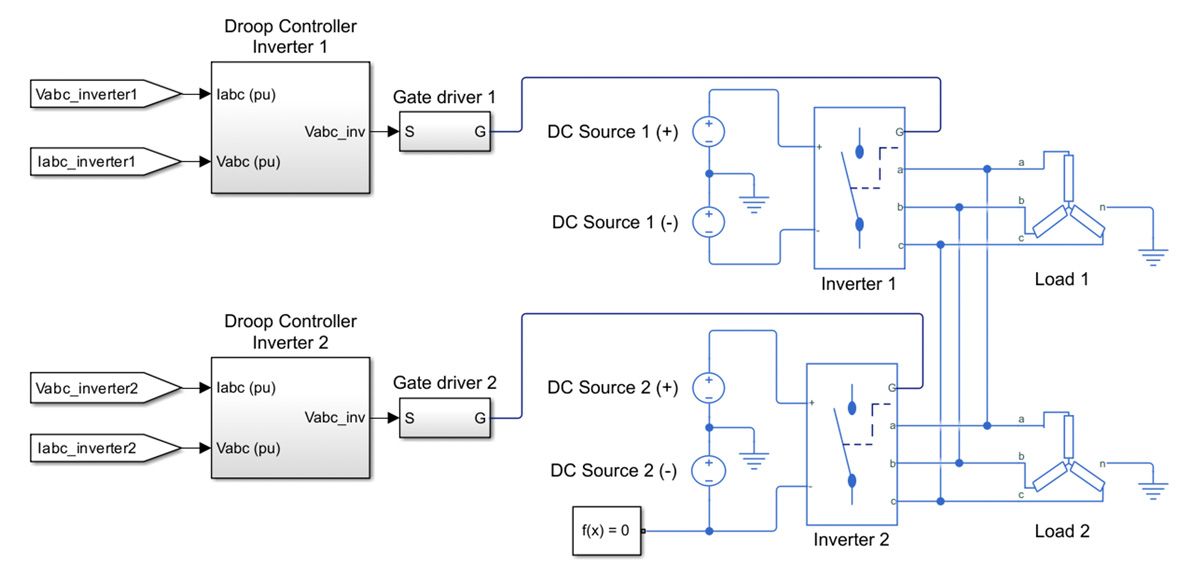Facilitate power sharing between multiple generators
Droop control is a technique for controlling synchronous generators and inverter-based resources in electric grids. It allows multiple generation units to be connected in parallel, sharing loads in proportion to their power rating. In droop control, frequency and voltage “droop” values are assigned to each generation unit in the grid. These droop values represent how much the frequency and voltage are allowed to deviate from their nominal values to account for changes in power demands.
The most common type of droop control is conventional droop control. In conventional droop control, frequency and voltage vary linearly with respect to active and reactive power, respectively. For instance, assigning a 1% frequency droop to a converter means that its frequency deviates 0.01 per unit (pu) in response to a 1.0 pu change in active power. Reverse droop control is an alternative technique that can be useful in low-voltage microgrids.
Simulink®, Simulink Control Design™, and Simscape Electrical™ accelerate droop control design by enabling you to:
- Develop a controller using Simulink.
- Create a grid plant model using Simscape Electrical.
- Tune PI controllers for d- and q-axis voltage tracking using PID Tuner app.
- Run closed-loop simulations of the controller and grid to validate system performance.
- Generate C, C++, or HDL code to deploy your controller to hardware using Simulink Coder™, Embedded Coder®, and HDL Coder™.
Examples and How To
Software Reference
See also: Simulink for electrification, grid-tied inverter, design power conversion controls faster with Simulink


